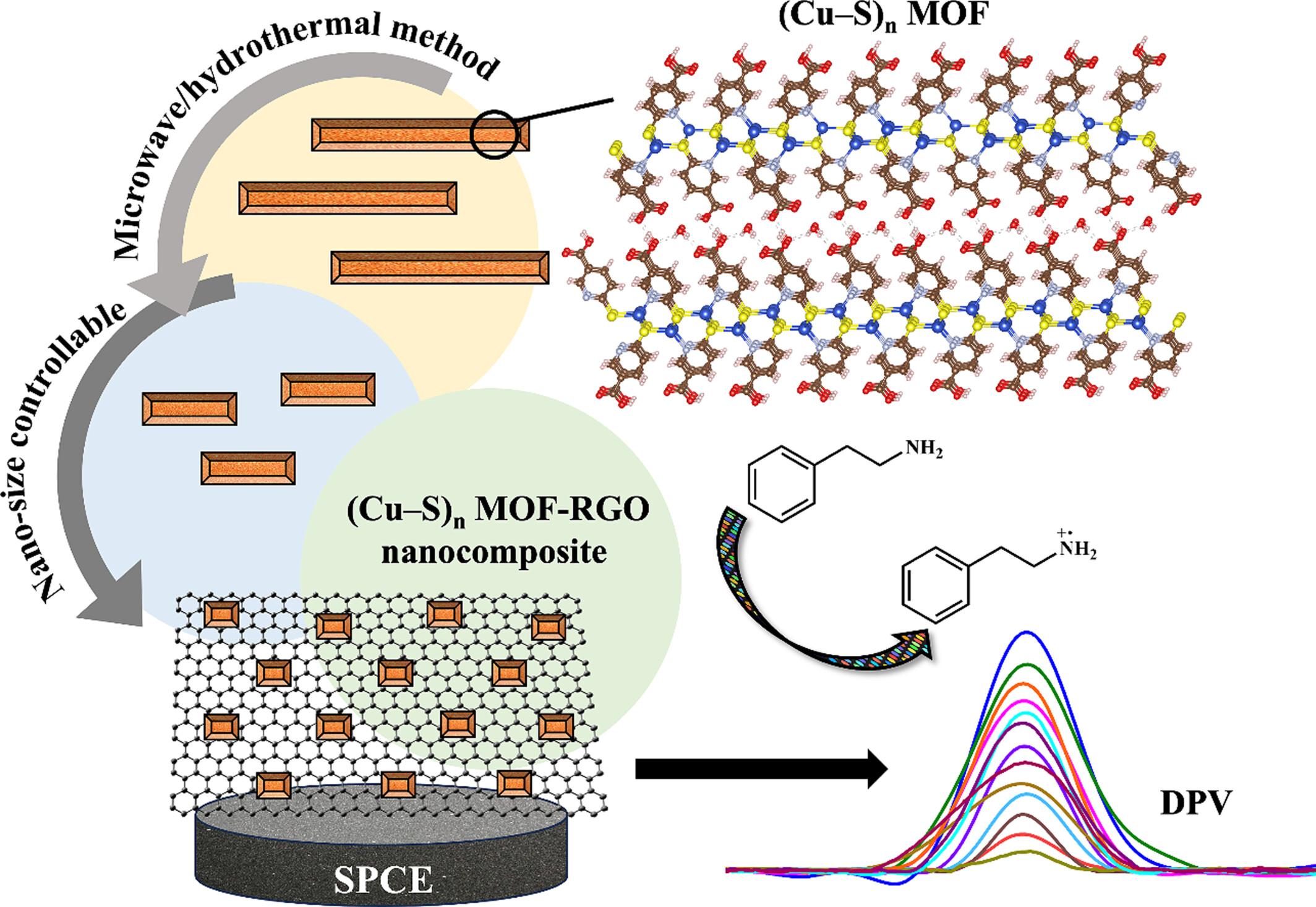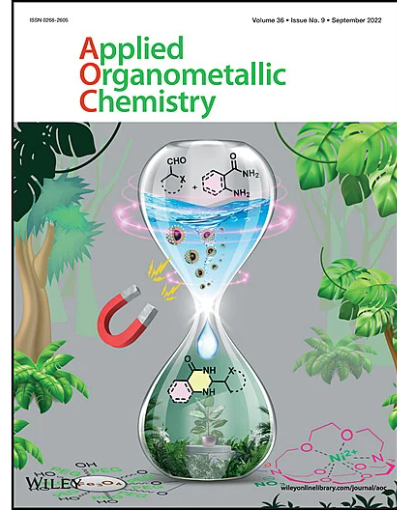通过原位微波和水热合成技术将纳米级可控二维 (Cu-S)n 金属有机框架与还原氧化石墨烯混合物用于电化学神经递质检测
IF 3.7
2区 化学
Q2 CHEMISTRY, APPLIED
引用次数: 0
摘要
我们提出了一种开创性的技术,用于可控合成纳米级半导体二维(2D)(Cu-S)n 金属有机框架(MOF)/石墨烯纳米复合材料,用于电化学传感神经递质 2-苯乙胺(PEA)。(Cu-S)n MOF 的大小受氧化石墨烯比例的控制,从而提高了电催化活性。改性电极的表面积从 0.0639 cm2 增加到 0.1906 cm2,在 15-200 μM 和 1-10 μM 的线性范围内的检测限(0.0156 和 0.004 μM)令人印象深刻,为生物传感提供了卓越的选择性、再现性和可重复性。本文章由计算机程序翻译,如有差异,请以英文原文为准。

Nanosize Controllable Two-Dimensional (Cu–S)n Metal–Organic Framework Hybrid With Reduced Graphene Oxide by In Situ Microwave and Hydrothermal Synthesis for Electrochemical Neurotransmitter Detection
We present a groundbreaking technique for controllably synthesizing nanosized semiconductive two-dimensional (2D) (Cu–S)n metal–organic framework (MOF)/graphene nanocomposites for electrochemical sensing of neurotransmitter 2-phenethylamine (PEA). The (Cu–S)n MOF size is controlled by graphene oxide proportions, enhancing electrocatalytic activity. The modified electrode exhibits a surface area increase from 0.0639 to 0.1906 cm2 and impressive limit of detection (0.0156 and 0.004 μM) within linear ranges of 15–200 μM and 1–10 μM, offering exceptional selectivity, reproducibility, and repeatability for biosensing.
求助全文
通过发布文献求助,成功后即可免费获取论文全文。
去求助
来源期刊

Applied Organometallic Chemistry
化学-无机化学与核化学
CiteScore
7.80
自引率
10.30%
发文量
408
审稿时长
2.2 months
期刊介绍:
All new compounds should be satisfactorily identified and proof of their structure given according to generally accepted standards. Structural reports, such as papers exclusively dealing with synthesis and characterization, analytical techniques, or X-ray diffraction studies of metal-organic or organometallic compounds will not be considered. The editors reserve the right to refuse without peer review any manuscript that does not comply with the aims and scope of the journal. Applied Organometallic Chemistry publishes Full Papers, Reviews, Mini Reviews and Communications of scientific research in all areas of organometallic and metal-organic chemistry involving main group metals, transition metals, lanthanides and actinides. All contributions should contain an explicit application of novel compounds, for instance in materials science, nano science, catalysis, chemical vapour deposition, metal-mediated organic synthesis, polymers, bio-organometallics, metallo-therapy, metallo-diagnostics and medicine. Reviews of books covering aspects of the fields of focus are also published.
 求助内容:
求助内容: 应助结果提醒方式:
应助结果提醒方式:


